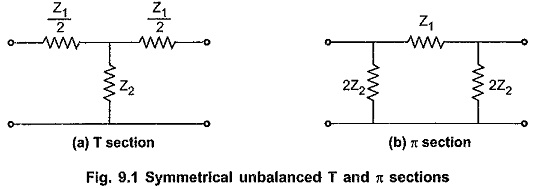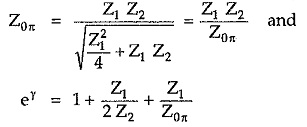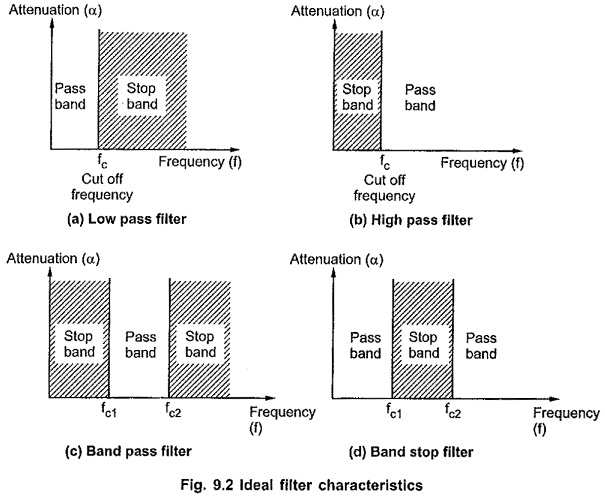Ideal Filter Characteristics:
Ideal Filter Characteristics – The range of frequencies over which attenuation by filter is zero is called pass band.
The range of frequencies over which attenuation is infinite is called stop band or attenuation band of the filter.
The frequencies which separate the pass band from attenuation or stop band are called cut-off frequencies of the filter represented as fc.
Here we will realize filters using symmetrical unbalanced T or π sections as shown in the Fig. 9.1 (a) and Fig. 9.1 (b).
Earlier we have studied two important properties of symmetrical networks, namely, characteristic impedance (Zo) and propagation constant (γ).
The characteristic impedance of symmetrical T network is given by,
The propagation constant of symmetrical T network is given by,
Similarly the characteristic impedance and propagation constant of symmetrical π network are given by following expressions.
Basic Filter Sections and Ideal Filter Characteristics:
If filter passes all frequencies upto the cut off frequency and attenuates all frequencies above it, then it is called low pass filter.
If filter attenuates all frequencies upto the cut off frequency and passes all frequencies above it, then it is called high pass filter.
Any simplest type of filter has only one pass band, one stop band and a single cut off frequency.
One can design a filter with two cut off frequencies to get two more filter sections.
If filter passes all the frequencies between the two cut off frequencies and attenuates all other frequencies, then it is called band pass filter.
On the other hand, if filter attenuates all the frequencies between the two cut off frequencies and passes all other frequencies, then it is called band stop filter or band elimination filter.
An ideal filter would have zero attenuation in the pass band and infinite attenuation in the stop band. An ideal filter characteristics are as shown in the Fig. 9.2 (a) to (d).




